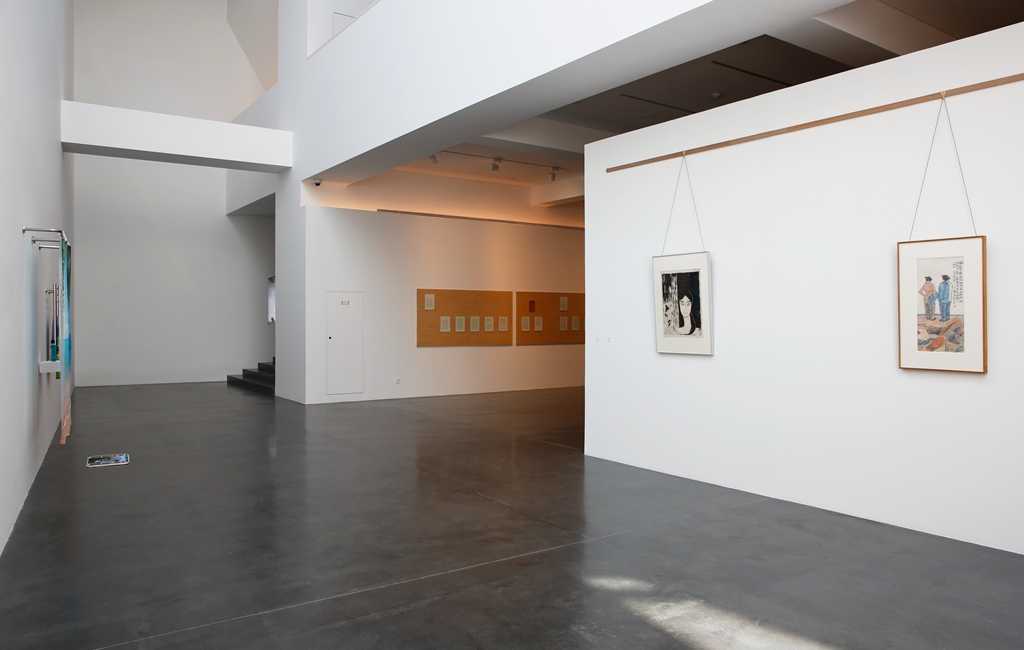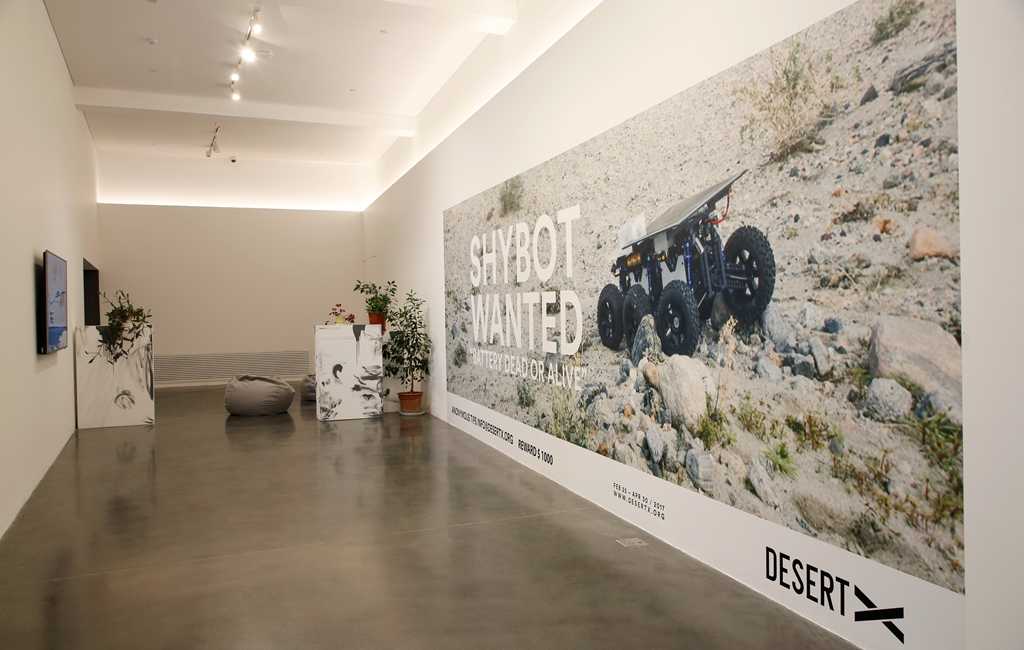
The Principle of Hope
Oct 16, 2021 – Feb 27, 2022
Inside-Out Art Museum, No. 50 Xingshikou Road, Haidian District, Beijing
Artistic Directors: Carol Yinghua Lu, Luo Xiaoming
Curatorial Team: Huang Wenlong, Liang Chouwa, Yin Shuai, Jerome Zhang, Scarly Zhou, Zhu Siyu
After a long summer of being closed for maintenance, Beijing Inside-Out Art Museum reopens with a new exhibition The Principle of Hope, in this golden fall. It is an exhibition that contemplates, envisions, summons and claims the “future.” By presenting the practices of Chinese and international artists and cultural practitioners, we demonstrate the future as a space full of potential, beckoning for the subjective individual, to confront the present with the courage and enthusiasm of a future-oriented outlook.
There was a time when the “future” was too clear to be discussed. However, things soon changed. There have been the setbacks from social revolutions, the loss of faith in utopia, the aggressive intervention of modern technology, and the continuous high profile of capital whose power renders all that is solid melt into air. All of these are the reasons for such a change. The pressing of the reality has not changed and even intensified. The ideal future, nevertheless, has become ambiguous in the process. Paradoxically, the controversy about the future has not occurred. The “future” that surrounds us is merely “a mass of reckoning to perfunctorily deal with the reality and to barely survive,” instead of thinking and doing to carve out a new world that is genuinely different.
Temporary calculation of one’s gains may bring convenience to life, yet it cannot keep one’s heart content. In all such “temporary moments,” it is impossible to see other views of the future or form other expressions of it. Even when one actively deals with the constraints of the present, a willingness to surrender still pervades. It is because, without a comprehensive understanding of the relationship between the existing order and the future, all the perfunctory coping and reckoning are merely salvaging bits and pieces of froth from history. It is essentially subservient to the bones of the existing structure and even further strengthening it, robbing everyone of their futures.
To start taking responsibility for ourselves in the most profound sense, we need to reconstruct our relationship to the future, create a highly contested future, and replace the monolithic vision of the future, one that is utterly bound by technology, capital, and politics. Thus it can be the starting point for setting free our ability to imagine and to act. We should trust ourselves as agents of change, rather than endure passively and surrender the future to the hegemony of all that is past and present. Such is both a fundamental proposition of the modern human society and a mission for China since the modern era.
The title of this exhibition, “The Principle of Hope,” comes from the book The Principle of Hope, a philosophical masterpiece published in Germany after World War II. The author, Ernest Bloch, fled to the United States after the Nazi suppression of Communist movements in Germany in the second half of the 1930s. It was then that he set about writing The Principle of Hope. He pondered the “philosophy of the future” precisely because his country and himself were in a situation where there was no “future.” For the author, utopia is not an impossible ideal but a modern expression that can inspire change. Bloch believes that the past and the future are full of exploitable potential. The heritage gained from the past is not a fixed tradition but an unleashed supply of content that offers hope.
With a self-reflective perspective, the exhibition The Principle of Hope responds to the hijacking of the future imagination and the imprisonment of idealism by political discourse, technological ideology, capital power, and stereotypical reality. The Principle of Hope aims to expand the spectrum of hope, evoking the courage to confront reality and establishing the consciousness to persevere in learning about hope. We should imagine the subjective agency of the form and content of the future world more freely, underscore the place of human beings within it, and aspire for changes more positively. We can employ the imagination of the future as a vehicle, to enable the formation of a new consensus. Only by consciously committing ourselves to imagining the creation of a new world, implementing these imaginations with all our might, maintaining a long-distance sense of action, and conceiving plans for change with a willingness to accept defeats and failures, can we radiate a constant flow of unconventional vitality.
Since 2017, Beijing Inside-Out Art Museum has been developing two parallel lines of projects. One is to revisit the historical process of Chinese contemporary art from the current standpoint. Armed with the experience, awareness of issues and confusions generated by being deeply implicated in the frontlines of artistic practices, we intend to sort out the historical motivations behind artistic phenomena, so as to develop a narrative and theoretical vision that better describe the lineage of Chinese contemporary art. Another line of work is to attend to burning issues of the current moment, to come to grips with them through exhibitions and academic seminars, to involve ourselves in these discussions. The role of art museums as a public realm that evokes discussions and thinking can be fully realized through these projects. This is also the responsibility of a contemporary art institution as a participant in contemporary culture.
In previous exhibitions such as Self Criticism, The Lonely Spirit, Happy People, An Impulse to Turn, etc., China as an Issue lectures and publications, to The Principle of Hope, the issues they raised are prompted by the real world. They are interrelated and connected with multiple threads all together. Despite their differences in topics and perspectives, the underlying concern stays the same: we need to delve more deeply into our reality and living conditions, and to strive for the space of dissent and debate. These complex relationships and situations are both our challenges and our resources of inspirations. All great works of literature and art encompass profound morality and political nature simultaneously, containing visions of a more rational social system, and thus naturally powerful critiques of real life. Exhibitions and institutional practices should also be at the same level of intellectual aspirations. Politics in a broad sense is ubiquitous in life, affecting our deepest thinking about the meaning of existence and constituting an important basis for such thinking. Contemporary art and the practice of contemporary art institutions cannot avoid such politics in a broad sense, nor should they ever. To address this kind of politics, art and art institutions should approach it in ways appropriate to art and art institutions. This is what we are trying to achieve with these exhibitions.
This exhibition is conceived by Carol Yinghua Lu, art historian and director of Beijing Inside-Out Art Museum, and Luo Xiaoming, scholar of cultural studies and head of the Department of Cultural Studies at Shanghai University. They work with a team of young curators, including Huang Wenlong, Scarly Zhou, and Zhu Siyu, members of the research and curatorial team of Beijing Inside-Out Art Museum, and invited curators including Liang Chouwa, Yin Shuai, and Jerome Zhang. The team searched for relevant works based on the theme of the exhibition, while the discovery of works also helped deepen the theme through this process. The four groups of curators have approached the discussion of the theme through four perspectives: the marginalized future (Yin Shuai), the concept of “future” and human agency (Huang Wenlong, Zhu Siyu), survival strategies for data governance (Jerome Zhang), and technology and human emotions (Liang Chouwa, Scarly Zhou). Through this exhibition, we hope to cultivate in ourselves and our colleagues the courage to directly face up to life and the world, to take responsibility, and to pursue a more inner and fundamental answer to the meaning of life. Only in this way can we maintain the independence of the human spirit, expand the abundant possibilities of human existence. We should persistently resist being manipulated by a specific reality and practice hope in a seemingly desperate situation, thus opening up another world with tireless efforts.
Francis Alÿs, Aram Bartholl & Nadja Buttendorf, Erick Beltrán, Chen Chen Yu, Chen Juanying, Karel Čapek, Carlomar Arcangel Daoana, Datong Dazhang, Péter Dobai, Fang Tianyu, Lawrence Abu Hamdan, Norma Jeane, Pauline Julier & Nicolas Chapoulier, Pope. L, Lei Lei, Li Jiaqi, Feng Kehui, Mak Ying Tung 2, Pedro Neves Marques, Meng Jinghui, Nabuqi, Phil Patiris, Gabriel Tejedor, Xingfu Peifang, Wang Xiyan, Xper.Xr, The Yes Men, Liam Young, Goang-Ming Yuan, Gary Zhexi Zhang, Zhong Ming

























